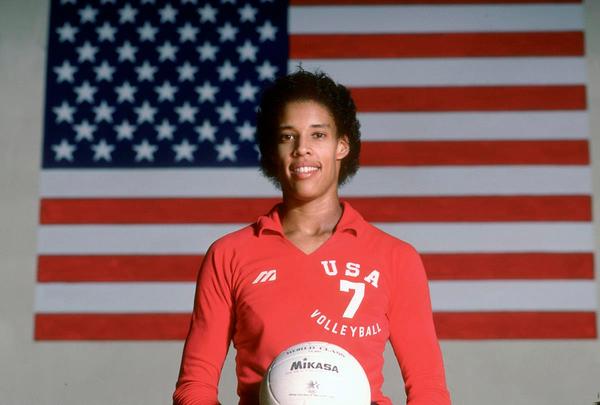The 37th annual National Girls & Women in Sports Day (NGWSD)

📗 The history
The first NGWSD was held in 1987 after U.S. President Ronald Reagan signed a proclamation declaring the first Wednesday of every February as National Women in Sports Day. The day was originally established in remembrance of American Olympic volleyball player Flo Hyman, who passed away suddenly while competing in a volleyball tournament in 1986.
- Since then, NGWSD has evolved into a multifaceted day dedicated to acknowledging women’s history in sports, celebrating current achievements and recommitting to the continued fight for equality. HYFR.
🔥 Changing the game
NGWSD is also about highlighting the countless positive impacts of girls’ sports participation. COVID-19 sadly correlated with an overall decline in youth sports involvement: As of September 2021, 28% of kids who participated in sports pre-pandemic are no longer interested.
- Plus, by age 14, girls drop out of sports at twice the rate of boys due to barriers like lack of access, social stigma, costs and more.
- As of 2020, only 36.4% of girls played sports, compared to 45.6% of boys.
With those stats in mind, it’s even more important to spotlight how game-changing sports are for girls, pun intended. Along with learning essential life skills like teamwork and leadership, girls who play sports are more likely to have higher levels of self-esteem and lower levels of depression.
- And those impacts transfer to life beyond sport. A 2015 study found that 80% of female executives at Fortune 500 companies played competitive sports before suiting up for the boardroom.
💪 The progress
Grab your party hat, because it’s time to celebrate the barrier-breaking progress made in women’s sports since the last NGWSD and the trailblazers who made it happen. Watch your step, there’s shattered glass everywhere.
⚽ Soccer: Footy changed forever in May 2022 when the USWNT and USMNT reached historic collective bargaining agreements (CBAs) which guaranteed equal compensation and treatment for both squads.
- The landmark deal ended the USWNT’s years-long equal pay battle and undoubtedly inspired other federations to fight for their fair share. LFG.
🚲 Cycling: It took 33 years, but the first official Tour de France Femmes finally took the starting line in July 2022. The catalyst? Proof of demand. In 2020, the pandemic’s virtual Tour featured both men’s and women’s races, which unsurprisingly showed that viewers were hungry for a full-fledged women’s edition.
⚾ Baseball: Last April, San Francisco Giants assistant Alyssa Nakken became the first woman to coach on the field in the bigs. Then in May, trailblazer Kelsie Whitmore made history as the first woman to pitch and start in the Atlantic League, an MLB Partner League.
- And just last month, Ronnie Gajownik was named the first female manager at the High-A level (an MLB feeder league) when she was tapped to lead the Hillsboro Hops, an affiliate for the Arizona Diamondbacks. The diamond really is a girl’s best friend.
📈 Rising attendance and viewership: Countless women’s sports spectator records have been smashed in the last few months, with international soccer matches, NWSL clashes and college volleyball, softball, basketball and gymnastics battles all drawing astonishing IRL crowds.
- The boom extended to TV, too: The WNBA enjoyed their best regular-season viewership in 14 years, women’s March Madness surged 81% across all rounds and the NWSL championship drew a record 915K viewers. If you stream it…
🔮 The future
This progress is certainly cause for celebration, but it’s no secret that there’s still work to be done to truly achieve gender equity in sports. One major priority? Supporting trans rights.
- At least 34 states have proposed or passed anti-trans legislation, and the “debate” made headlines when collegiate swimmer Lia Thomas made history last year.
- While opponents claim they’re “protecting women’s sports,” these policies are clearly rooted in fear and hate. Any and all work toward gender equity in sports must include all girls and women.
An area of growth to keep an eye on? Women’s sports media broadcast deals. NWSL rights hit the market this year, with women’s March Madness on the table in 2024. Plus, the WNBA is already in talks for a fresh nine-figure contract before their current deal expires in 2025. The next big thing is nearly here.
- And with those aforementioned record-setting viewership numbers, there’s no telling how deep the impact of actually putting women’s sports on TV will be. Spoiler alert: The limit does not exist.
On top of that, the 2023 cal is shaping up to be an epic one for gals in the game. The WNBA’s inaugural increased 40-game regular-season slate tips off in May and, of course, the 2023 FIFA Women’s World Cup takes over Down Under in July. This party is just getting started.
Enjoying this article? Want more?

Sign up for The GIST and receive the latest sports news straight to your inbox three times a week.

